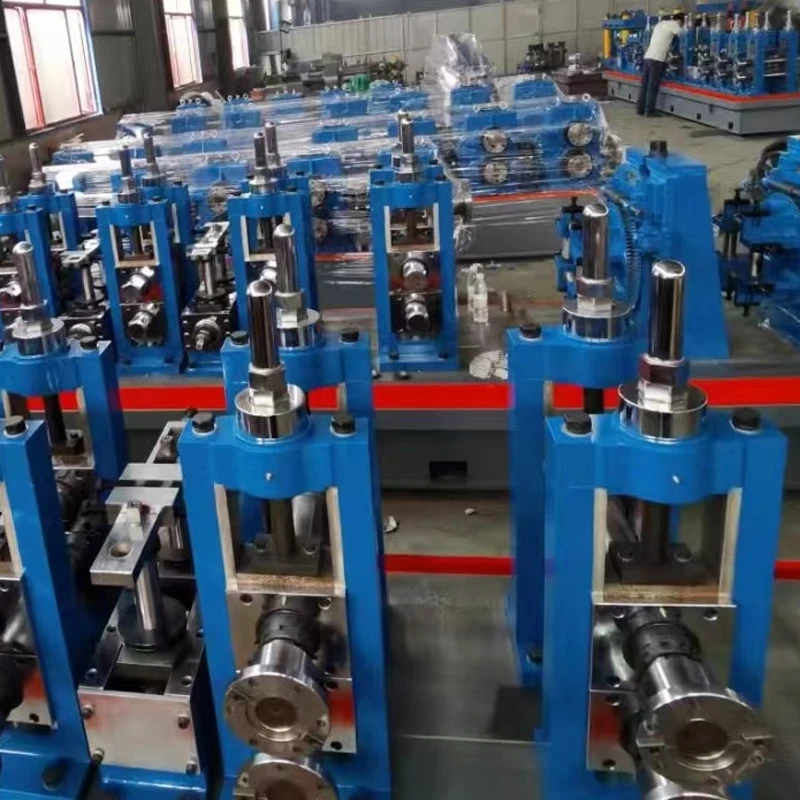Cold Rolling Embossing Equipment for Enhanced Metal Surface Texturing
Cold Rolling Embossing Machine A Modern Solution for High-Quality Surface Finishing
In the ever-evolving world of manufacturing, the demand for high-quality, aesthetically appealing, and functionally superior products continues to grow. The cold rolling embossing machine has emerged as a vital tool in meeting these demands, particularly in industries such as automotive, electronics, construction, and consumer goods. This article delves into the significance, functionality, and advantages of cold rolling embossing machines.
Understanding Cold Rolling and Embossing
Cold rolling is a process used to reduce the thickness of metal sheets or strips at ambient temperatures, as opposed to hot rolling, which requires elevated temperatures. This method enhances the material's strength and provides a superior surface finish. Embossing, on the other hand, refers to the creation of raised or recessed designs on the surface of materials, often for aesthetic or functional purposes, such as enhancing grip or providing texture.
Combining these two processes, a cold rolling embossing machine efficiently compresses metal sheets or films to create intricate patterns, designs, or textures while simultaneously achieving a reduced thickness. This dual functionality makes cold rolling embossing machines indispensable in the production of diverse products.
The Working Mechanism of Cold Rolling Embossing Machines
A cold rolling embossing machine consists of several critical components that work together to achieve desired results. The operation begins with the feeding of raw metal sheets into the machine. The sheets pass through rollers that apply pressure to alter their thickness and shape, creating a flat and uniform surface.
As the sheets move further along, they encounter a set of embossing rollers equipped with engraved designs. These rollers imprint the desired textures onto the metal surface as it passes through. The precise control of pressure and speed allows for customized patterns and thicknesses, making the cold rolling embossing machine versatile for various applications.
Applications Across Industries
Cold rolling embossing machines find extensive applications in various sectors. In the automotive industry, for instance, they are used to create textured surfaces for dashboards, door panels, and other interior components, enhancing both appearance and functionality. The electronics industry also benefits from these machines, utilizing them to produce textured surfaces on circuit boards and other component housings that aid in heat dissipation and grip.
cold rolling embossing machine

In construction, cold rolled embossed sheets are used as decorative elements in façade designs or as functional components in roofing and flooring. Additionally, in consumer goods, embossed patterns are commonly found on packaging, appliances, and decorative items, adding an aesthetically pleasing finish that enhances the product's market appeal.
Benefits of Using Cold Rolling Embossing Machines
1. Enhanced Product Aesthetics One of the primary advantages of using cold rolling embossing machines is that they significantly improve the visual appeal of finished products. Unique patterns can differentiate products in competitive markets.
2. Increased Strength and Durability The cold rolling process strengthens the material, ensuring that embossed products are robust and long-lasting. This is particularly important in applications where structural integrity is critical.
3. Cost-Efficiency By combining two processes into one machine, manufacturers can reduce production costs, time, and labor. This efficiency can significantly benefit overall production lines, leading to increased profitability.
4. Customizability Manufacturers can tailor embossing patterns and thicknesses to meet specific customer needs, resulting in highly customizable production capabilities.
5. Environmental Considerations The cold rolling process generally requires less energy compared to hot rolling, making it a more environmentally friendly option. Furthermore, the ability to maximize material use means less waste.
Conclusion
The cold rolling embossing machine represents a fusion of advanced engineering and practical application, enabling manufacturers to produce high-quality, aesthetically pleasing, and durable products across various industries. As technology continues to advance, we can expect further innovations in this field, making the cold rolling embossing machine an essential asset for businesses seeking to enhance their production capabilities and meet the growing demands of the market. Whether for functional uses or decorative applications, the versatility and efficiency of these machines underscore their importance in modern manufacturing.
-
High Frequency Straight Seam Welded Pipe Production Line-BzZhou Xinghua Machinery Equipment Manufacturing Co., LTD.|Precision Welding, High EfficiencyNewsJul.30,2025
-
High Frequency Straight Seam Welded Pipe Production Line|BzZhou Xinghua|Precision Welding&EfficiencyNewsJul.30,2025
-
High Frequency Straight Seam Welded Pipe Production Line - BzZhou Xinghua|Precision Engineering&EfficiencyNewsJul.30,2025
-
High-Frequency Straight Seam Welded Pipe Production Line-BzZhou Xinghua Machinery Equipment Manufacturing Co., LTD.NewsJul.30,2025
-
High-Frequency Straight Seam Welded Pipe Production Line-BzZhou Xinghua Machinery Equipment Manufacturing Co., LTD.|Precision Manufacturing, High EfficiencyNewsJul.30,2025
-
High Frequency Straight Seam Welded Pipe Production Line-BzZhou Xinghua Machinery Equipment Manufacturing Co., LTD.|Precision Steel Pipe Manufacturing&Industrial EfficiencyNewsJul.29,2025


